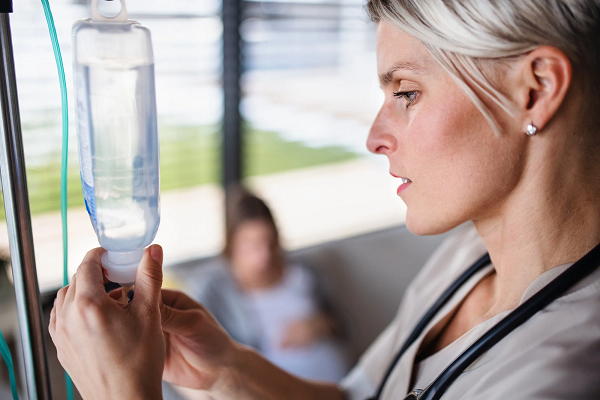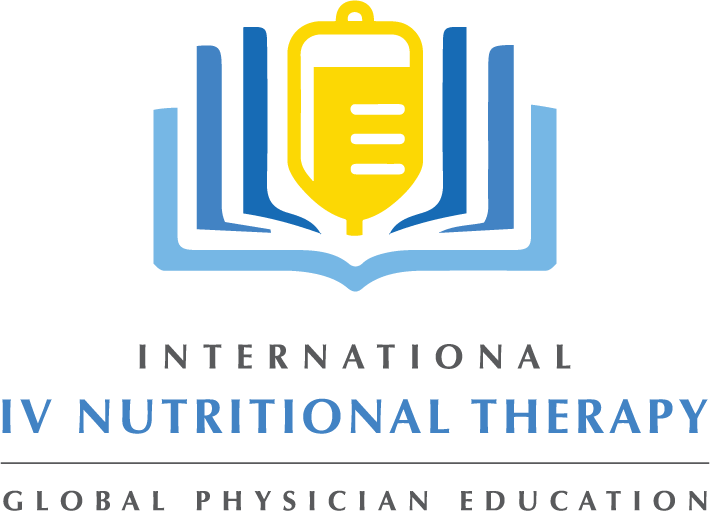
In the United States approximately 75% of Americans are chronically dehydrated, and it has been reported to occur in up to 28% of older adults. It’s a common cause of hospital admission and complicates various medical conditions.
However, on the flip side, dehydration can be overdiagnosed and overtreated. Learning more about dehydration and IV hydration therapy treatments will help you provide the best patient care possible.
Read on to learn what you need to know about utilizing IV hydration and nutrient therapies for dehydration.
What Is Dehydration?
Dehydration is all about fluid balance in the body. When more fluids and water leave the body rather than enter it, dehydration can occur.
Since the human body is approximately 75% water, it needs water for survival. Water is found between the cells, inside the cells, and in the blood vessels.
The body loses water continuously throughout the day from various functions like breathing, urinating, defecating, and sweating.
Therefore, the body has its own water regulation system that balances the water levels. The thirst mechanism is the first thing that tells you it’s time to take in more fluids.
The body can also move water around to areas that need it the most if dehydration starts to occur.
However, if you don’t reverse dehydration with fluid intake, your body won’t be able to compensate. As a result, you can experience severe symptoms that require medical attention.
Dehydration Symptoms
Initially, people experience symptoms like darker urine, increased thirst, and decreased urine production. Urine color is the best indicator of dehydration and is easy for people to track.
The clearer your urine is, the more hydrated you are; darker urine indicates you’re dehydrated. As dehydration worsens, more symptoms develop, such as:
- Headache
- Dizziness
- Lethargy
- Dry mouth
- Muscle weakness
- Low energy levels
- Hands and feet feel cool to touch
Severe dehydration occurs once the body loses enough water, usually over 10% of the body’s total water. Symptoms of severe dehydration include low blood pressure, lack of sweating and urination, dry skin, and fever.
Children will frequently be irritable, have no tears when crying, or have no wet diaper for 3 to 4 hours.
Dehydration Causes
The main causes of dehydration involve not drinking enough or losing too much water throughout the day. Sometimes it’s a combination of both factors.
Often people don’t drink enough fluids because they’re too busy throughout the day to stop for a break. Other times, camping and hiking in an area without water can cause people to become dehydrated.
Sweating
Intense physical activity and hot and humid weather cause your body to release significant amounts of water. Severe sweating, along with a fever, causes people to dehydrate more.
Sweating combined with vomiting and diarrhea can make people dehydrate very quickly.
Diabetes
Having high blood sugar levels can cause increased urination. In fact, people with diabetes are at much greater risk for dehydration if they don’t drink enough water or have an intense exercise program.
Vomiting
Vomiting leads to a loss of fluids and makes it difficult to replace fluids by drinking them. Prolonged vomiting can lead to severe dehydration.
Diarrhea
Dehydration is one of the main complications of diarrhea, especially if the diarrhea is severe and lasts long-term.
Burns
Severe burns can cause blood vessel damage. This causes fluid to leak into body tissues, which depletes body fluid and causes dehydration. Eventually, this can lead to severe issues like “burn shock.”
Kidney Disease
Chronic kidney disease can cause fluid and electrolyte loss since the kidneys don’t function normally.
Also, medications for kidney disease, like diuretics, can increase dehydration risks further.
IV Treatments for Dehydration
IV fluids such as normal saline or Lactated Ringers solution are infused to treat or prevent dehydration. IV hydration is utilized for people of any age who are dehydrated from disease, injury, heat, or exercise.
It also treats electrolyte balances that can result from severe dehydration. Any moderate to severe hydration should be treated in a doctor’s office or hospital.
When Should You Use IV Treatment for Rehydration?
Any seriously dehydrated patient will need IV fluids to restore fluid balance in their body. Anyone with prolonged vomiting and diarrhea should get intravenous fluids.
Additionally, serious injuries like burns or complex surgery need IV rehydration. With no food or liquids as the standard protocol prior to surgery due to anesthesia, they can exhibit signs and symptoms of dehydration soon after surgery.
What Are the Different Types of IV Fluids?
Different types of IV fluids are available, and as a healthcare provider, you have to decide which is best for your patients.
Crystalloid Solutions
Crystalloid solutions are the most common kinds of IV fluids. They have small dissolved molecules that will easily pass from the bloodstream to the cells and tissues.
Examples of crystalloid solutions include:
- Normal saline
- Dextrose 5% in water
- Lactated Ringers
Normal saline (0.9% sodium chloride) will help replace fluid loss and sodium depletion. It’s best for issues like dehydration due to fluid loss, infection, or bleeding.
Lactated Ringers (LR) are the best choice for issues like electrolyte imbalances. This is because LR contains electrolytes like potassium, sodium, and calcium. While LR is great for electrolyte replacement, you must be cautious with people with kidney failure.
Dextrose, 5% in water or D5W, is best for people with severe dehydration from kidney failure or head injuries.
Colloids
Colloids are not as common but still are essential for many people. Colloids contain large molecules that remain in the blood vessels. This means they can draw fluid back into the blood vessels.
Therefore, they’re best for traumatic injuries like severe burns, shock, or conditions like pancreatitis.
Learn More About IV Hydration Therapy
Overall, nutrient therapies and IV fluids ensure your patients receive optimal hydration, so it’s well worth learning more about IV therapy’s clinical applications.
Learning more about IV hydration therapy will help you determine the best IV therapy treatments to improve your patient’s overall health and well-being.
It’s time to learn more about IV therapy, including the latest research and treatments. You can turn to International IV Nutritional Therapy for all your clinical education needs. Our main mission is to teach people how to safely and effectively administer IV fluids and nutrients while upholding a high standard of care.
Make sure to contact us today to learn more about our seminars, upcoming events, and online courses.


Hello! I just wanted to say how much I appreciated this blog post. Your writing is always so engaging and informative. It’s clear that you have a deep understanding of the subject matter. Thank you for sharing your expertise with us. Looking forward to your next post!
Hi there! Just wanted to let you know how much I enjoyed reading this post. Your approach to the subject was unique and informative. It’s clear that you put a lot of effort into your writing. Keep up the great work, and I can’t wait to see what else you have in store.